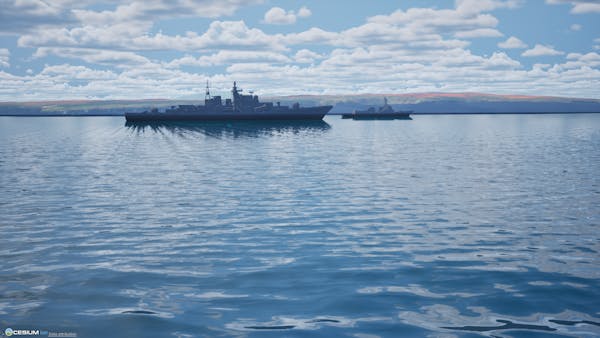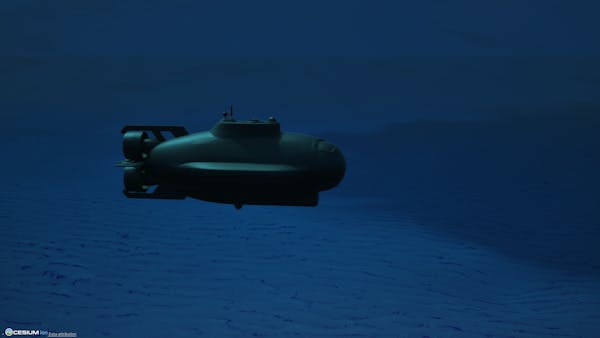Warfighting, Software, and the OTA
Editor's note: Cesium is committed to open source, open standards, and rapid innovation. We power training, planning, operations, and analysis across the US Department of Defense and Intelligence Community. We're proud to have collaborated with NUWC Division Newport and NSWC Carderock Division on this article about the impact of OTAs. Read the PDF here.
In March 2025, Defense Secretary Pete Hegseth issued the memo “Directing Modern Software Acquisition to Maximize Lethality,” mandating the use of the Software Acquisition Pathway for all Department of Defense (DOD) software development procurements. This memo also instructs DOD components to prioritize Other Transaction Authority agreements (OTAs) and Commercial Solutions Openings (CSOs) as the preferred methods for acquiring software capabilities.
OTAs were created in 1958 to give DOD flexibility to incorporate business practices that reflect commercial industry standards and best practices into how it awards contracts. DOD historically employed OTAs in conducting research and development; in 2016, the National Defense Authorization Act expanded the use of OTAs to include prototype and production. This expansion provided the warfare centers with another alternative to a Federal Acquisition Regulation (FAR)-based procurement contract.
NAVSEA’s warfare centers have been doing business this way for years.
In 2016, the Undersea Technology Innovation Consortium (UTIC) was stood up as a non-profit research organization comprised of small and large technology companies, academia, and nonprofits who are developing undersea technologies and addressing defense and security challenges.
By 2018, UTIC, represented by management firm Advanced Technology International, and NUWC Newport Division signed a three-year OTA contract (renewable for up to 10 years) to explore Undersea Technology Innovation in a broad range of undersea and maritime prototyping activities. NUWC Newport Division’s contracting professionals began exploring how to use OTA to deliver prototypes to the submarine Fleet faster and soon released its first Call for Topics under the OTA—the first warfare center to pursue this option.
Their success led to collaboration with other warfare centers including the Naval Surface Warfare Center (NSWC) Carderock Division via Dave Sracic, Distinguished Software Engineer for Fleet Signatures Systems.
Sracic needed a solution that would let him approve software development without micromanaging it. In 2019, Sracic awarded two agreements utilizing NUWC Newport Division’s UTIC OTA, one of which went to Analytical Graphics Inc., whose subcontractor was Cesium.
Cesium specializes in 3D geospatial technology, particularly for visualization and analysis. The company is considered a “non-traditional” government partner, which was a major aspect of the success of the collaboration.
As part of the OTA prototype agreement, Cesium provided a platform for building 3D geospatial applications, including CesiumJS, an open-source library for 3D visualization in web browsers designed for robust interoperability and scaling for massive datasets. Cesium works to advance the geospatial ecosystem and open source, open standards, data sharing, and interoperability.
In May 2024, NSWC Carderock awarded $2.2 million to Cesium through the OTA.

Stills from Cesium’s bathymetry data set.

Stills from Cesium’s bathymetry data set.
“UTIC had already proven to be effective for my team and our small initial toe-in-the-water approach had been highly successful. Given the choice between working with NUWC Newport to put together a new Request for Prototyping versus pursuing a traditional FAR-based path, it wasn’t much of a choice at all—I’ll take six weeks over 18 months any day,” said Sracic.
Trent Tinker, director of Cesium’s federal business development, said, “From Cesium’s perspective, the OTA streamlined administrative processes and allowed for a direct line of communication with Navy customers. The OTA got us a step closer to the end users, and ensuring their data supports better, faster decisions is something that we’re really excited about.”
According to Sracic, “Open source software is a building block of nearly every DOD system, and at some level, virtually all of the world’s most complex software systems. Our key challenge in building Navy combat systems is in using open-source software without finding ourselves trapped when it evolves faster than we do. Our thought was we’re using this open source CesiumJS and it does 80 percent of what we want, so let’s pay the experts who built it to make it do more.”
As Sracic explained, “We got those changes back into CesiumJS, upstream, open source version, which means we do not have to keep a Navy fork of that software. The open source community maintains those specific changes. We care deeply about those features and use them heavily. Now that they’re part of the master branch, with test cases, we have reasonable confidence they won’t die, and we don’t pay some kind of sustainment fee. This is what the DOD policy aspires to—the government contributing back to open source.”
“The OTA also enables Cesium to work with warfare centers on the open source position of their challenges,” said Tinker. “While some of the development stays with the government, other roadmap-aligned services go to the open source baseline and benefit everyone.”
“Public-private partnerships between the Navy and UTIC members enable the Navy to create new paths to acquire and improve technological capabilities aboard its fleet, focusing on critical missions rather than the building blocks of visualization. Dave Sracic was proactive and flexible, and our terms were Firm Fixed Price, pairing our risk tolerance and desire to do meaningful work as a technology growth company,” said Patrick Cozzi, Cesium founder and Bentley Systems chief platform officer.
“This is quantifiable value and return on investment, and sufficient to justify follow-on efforts to integrate capability into a combat system, which is a win for Navy in that it’s already risk-reduced and well understood,” explained Sracic. “And it’s a win for industry, which can do that work through non-competitive follow-on to the OTA.”